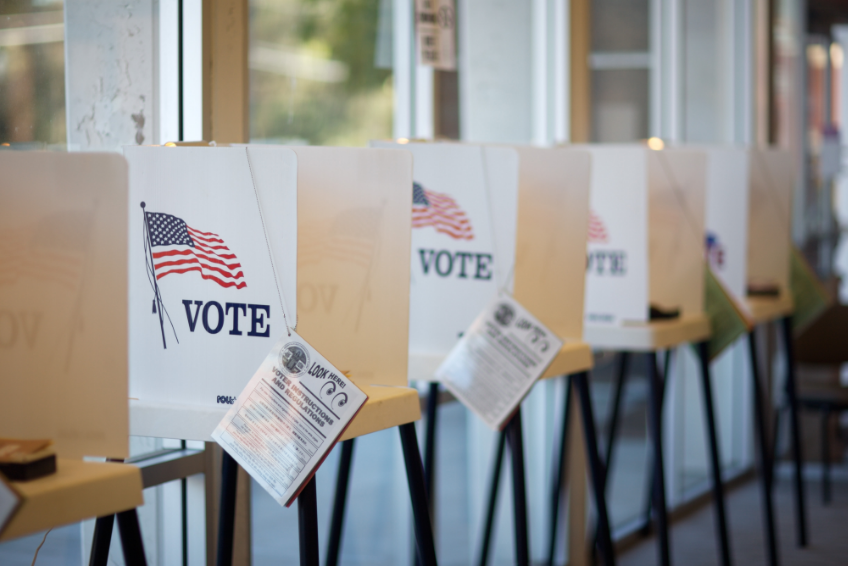Last week, the CDC issued new mask guidelines that got everyone excited. Fully vaccinated people no longer have to wear masks or social distance unless required by other rules in place (federal or local laws, business policies, etc.). There are a few caveats. For example, masks are still required in airports and on public transportation. Also, this guidance doesn’t apply to healthcare settings.
As soon as this was announced, some businesses modified their policies. At Disney World and Universal Orlando, masks are no longer required in “outdoor common areas.” Walmart, Costco, Starbucks, and Publix no longer require masks for fully vaccinated customers; Target no longer requires masks for fully vaccinated customers or employees.
These new guidelines are certainly welcome news. After over a year, I think it’s safe to say we’re all ready for more normal. We’re ready to travel, attend events, see friends and family. So, this is an exciting step!
It’s also safe to say that this step leaves a lot of room for error – and confusion. I’ve repeatedly heard things like, “No more masks!” and “People don’t have to wear masks anymore!” The CDC is having to address a lot of confusion about their announcement. I’m sure you and I both know people who haven’t been wearing masks anyway. And now, there’s growing pushback I’m seeing about the freedom for “personal decisions.” Some people don’t want to be told what they can and can’t do. They want their vaccination status to be their information to know (which often means they aren’t vaccinated).
In the midst of all this excitement, what should your organization do? How should you apply the CDC ‘s new guidelines?
Just as there’s been a growing push to reopen churches and a growing push to return to work, there’s probably going to be a growing push to revise mask policies. Most likely, you have employees and customers/attendees/visitors to think about. Let’s establish a few foundational ideas to set the stage for our discussion:
- You’ve had a mask policy in place for everyone thus far.
- You’re not in a healthcare setting (or transportation or any other setting where the guidelines aren’t changing).
- You’re mostly an indoor operation.
There are 3 basic options you have. To some extent, you could choose combinations of these options. With each option, I’d recommend just focusing on the mask part of your policies – not the social distance part. Unless you are certain that everyone in your organization is fully vaccinated, it’s too difficult to navigate who needs to / doesn’t need to social distance. Stick with the step of masks first.
Option 1: Keep Everything the Same
Everyone’s had to wear masks in your organization thus far. Everyone still needs to.
Best for:
- Settings where any other option is too difficult.
- Settings where the majority aren’t yet vaccinated (or have weakened immune systems and are following those CDC guidelines about precautions).
Keep in mind:
- You might get pushback from those who are fully vaccinated.
Option 2: Allow Fully Vaccinated Employees to Not Wear Masks
Allow your fully vaccinated employees to no longer wear masks at work. For employees who aren’t yet fully vaccinated, regardless of the reason, they need to continue wearing masks.
I don’t recommend the honor system. As much as we wish that would work, there’s way too much room for error. You as the employer are responsible for ensuring a safe environment. The last thing you need is a non-vaccinated employee walking around without a mask, testing positive for COVID, and exposing other non-vaccinated employees or customers.
The EEOC allows you to ask employees to provide proof of COVID vaccination. To avoid any ADA-related disability discussions, all you need is vaccine documentation – no further medical information. Avoid asking follow-up questions about why someone did or didn’t get the vaccine.
Assuming you aren’t requiring vaccination, I think the best approach is to provide the option of showing documentation. If they can provide the documentation, they don’t have to wear masks. If anyone doesn’t want to provide documentation, that’s fine – they just keep wearing masks. Keep it simple.
Best for:
- Settings where many employees are getting vaccinated.
- Settings where you are encouraging vaccination. This “reward” of no longer having to wear a mask can tie in really well with your messaging!
Keep in mind:
- Make sure to define and emphasize the “fully vaccinated” part.
- Have a tracking system so you easily know who’s been approved. Keep all medical documentation separate from personnel files. Think about a sticker on the employee badge or something simple that indicates approval to not wear a mask.
- Be prepared for employees to complain about having to provide documentation. Remind them it’s optional. You’ll probably have at least one person try to tell you it’s a HIPAA violation – it’s not. HIPAA relates to how health providers and health plans have to safeguard patient privacy.
- Be prepared for employees who aren’t vaccinated to say this makes them feel shamed. Explain nothing about this is intended negatively toward anyone. Rather, this is a positive step. (Make sure your communications align with this.) You’re going by the CDC’s guidelines.
- You’ll need to clearly communicate your policy to your customers. Think about a sign on the front door, a note on your website, etc. Outline that employees who are fully vaccinated have the option of not wearing a mask and customers can be assured that an employee with no mask is fully vaccinated. Train employees to be sensitive to the comfortability of customers. If they’re assisting a customer who has his/her mask on, they should put their mask on as well. (Same thing if they’re around children – mask on!)
- On that note, be mindful of how your customers respond to this policy change. If you (1) start losing business or (2) have more customers not following the rules, you may want to reverse course.
Option 3: Allow Fully Vaccinated Customers/Attendees/Visitors to Not Wear Masks
A lot of larger businesses seem to have started with this step, but I think this is one of the trickiest ones to think through. Allow fully vaccinated customers/attendees/visitors to not wear masks. Keep in mind that the vaccine is currently approved for ages 12 and up.
Just like with Option 2, I don’t recommend the honor system. There are just too many people inclined to not wear masks. That potentially puts your employees and other customers at risk.
In transparency, let me say that part of this is probably coming from my personal experiences. I’m in Georgia, where a lot of people aren’t taking masks seriously. While my husband is fully vaccinated, I’m not yet because I’m pregnant. I’m waiting for the go-ahead from my OB. We also have a 2-year old daughter who can’t get vaccinated yet. To be honest, I feel like I’m having to be more cautious now than ever before. It’s crucial for us to be assured that anyone around us who isn’t wearing a mask is fully vaccinated. If an organization is going by the honor system, I feel like my daughter and I can’t go inside.
And there are a lot of other people with similar situations.
You should be doing some kind of health questionnaire anyway with people who enter your building. So, just provide the option for people to show documentation they’re fully vaccinated. It should take the same amount of time as if they were going through the questionnaire.
Best for:
- Settings where you anticipate a lot of people entering your building have been vaccinated.
- Settings where you have the capability to have employees review documentation. While again, it’s not a HIPAA violation to ask for documentation, you do want to be careful with medical information. It’s best to have an employee (or a very trained volunteer with a medical background) reviewing documentation.
Keep in mind:
- This process has potential to take a lot of time and staffing.
- It’s easier to take baby steps forward than to take a huge step forward and then try to backtrack.
- Think about a sticker or something easy that identifies those who have been approved to not wear masks. This is reassuring for everyone. (If you have a lot of recurring customers, you could consider something more permanent they could wear so they wouldn’t have to bring documentation every time.)
- Be prepared for the same types of pushback as above. For pushback about showing documentation, remind that it’s optional and for everyone’s safety and wellbeing. For pushback about shaming, remind that this is intended to be a positive step taken with caution to ensure safety and wellbeing.
- You’ll need to clearly communicate this policy. Think about signage on all your entrances, your website, etc.
- Be mindful of settings with a lot of children. I recommend masks on everyone in those settings – it’s much less confusing for children.
How to Choose?
There’s no one-size-fits-all best choice. Consider what will work the best in your particular organization. Again, remember, it’s easier to take baby steps forward than to take a huge step and then try to backtrack. There’s nothing wrong with continuing to require masks of everyone. So, if that’s where you land, that’s fine.
If you’re considering changes, I’d recommend waiting a few weeks – at least when it comes to customers/attendees/visitors. There’s a lot of confusion about the new guidelines, so waiting a few weeks gives time for clarification. It also gives more time for people to figure out what they’re truly comfortable with. This is new territory after a year of mask-wearing. Plus, a lot of places are making changes, and that makes it difficult to keep up with the rules. Let the dust settle, and then make a change.
I would also make sure that any changes are simple. You don’t want a lot of caveats you’re having to continually explain. Your policies and definitions need to remain simple.
Applying the CDC’s new “no mask” guidelines isn’t really a very simple task. So, the challenge is to make it that way for your organization. And to remember this is all about safety and wellbeing for everyone.
Photo credit: By perfectwave / Canva




